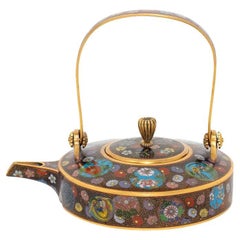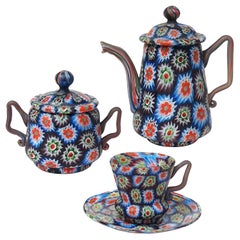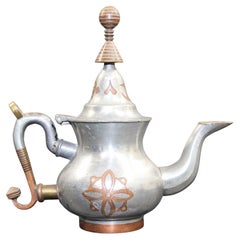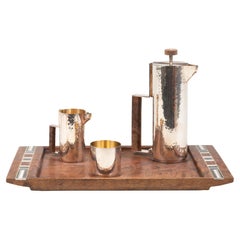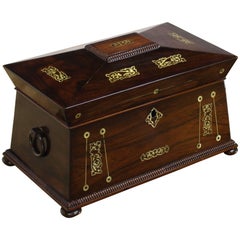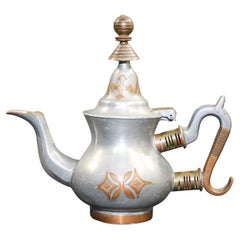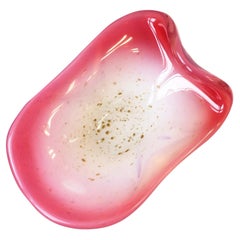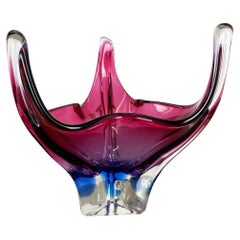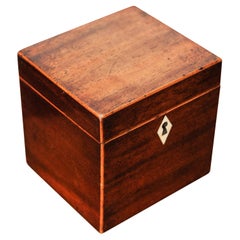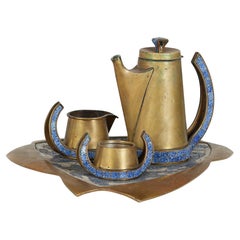Inlay Tea Sets
to
1
6
2
4
1
3
1
2
1
1
1
4
2
2
2
1
5
1
2
2
2
2
1
6
6
6
1
Technique: Inlay
Japanese Meiji Period Cloisonne Enamel Sake Pot
Located in Newark, England
Fine Japanese Meiji period cloisonne enamel Sake pot. The Sake pot of rounded form with with clean edges profusely decorated with blossoming flowers throughout upon a black ground ba...
Category
Late 19th Century Japanese Meiji Antique Inlay Tea Sets
Materials
Metal, Enamel
Fratelli Toso Murano Millefiori Mosaic Teapot Sugar Bowl Italian Art Glass Set
Located in Kissimmee, FL
Beautiful antique Murano hand blown millefiori flower mosaic Italian art glass teapot, sugar bowl, with teacup and saucer set. Documented to the Fratelli Toso Company, circa 1910-193...
Category
Early 20th Century Italian Art Nouveau Inlay Tea Sets
Materials
Glass, Art Glass, Blown Glass, Murano Glass, Murrine
$1,560 Sale Price / set
20% Off
African Tuareg Silver Pewter Tea Pot from Mauritania
Located in Moreno Valley, CA
Vintage African Tuareg Tea pot Mauritania
Mid-20th century Tuareg teapot from Mauritania, Africa, Western Sahara.
Handcrafted of pewter, copper and brass...
Category
Mid-20th Century Mauritanian Folk Art Inlay Tea Sets
Materials
Brass, Copper, Pewter
Modernist Sterling Hand Hammered Silver Coffee Service
Located in Montreal, QC
MODERNIST STERLING SILVER COFFEE SERVICE
Modernist sterling hand hammered silver coffee service and tray, the walnut tray and handles inlaid wit...
Category
1960s American Mid-Century Modern Vintage Inlay Tea Sets
Materials
Sterling Silver
$12,500 / item
19th Century Rosewood Tea Caddy Pyramid Shape Top Lid
Located in Rockaway, NJ
Mother-of-pearl and rosewood 19th century tea caddy lacquer box in very good condition.
Category
19th Century English Regency Antique Inlay Tea Sets
Materials
Mother-of-Pearl, Rosewood
Tuareg African Pewter Tea Pot from Mauritania
Located in Moreno Valley, CA
Vintage African Tuareg teapot Mauritania
Mid-20th century Tuareg teapot from Mauritania, Africa, Western Sahara.
Handcrafted of pewter, copper and brass ...
Category
Mid-20th Century Mauritanian Folk Art Inlay Tea Sets
Materials
Brass, Copper, Pewter
Related Items
Italian Murano Pink White Opaline Art Glass Bowl Attrib. Fratelli Toso
Located in New York, NY
A very beautiful Italian Murano white opaline, pink and gold art glass bowl attributed to Fratelli Toso company, circa mid-20th century, Italy. A beautiful oblong piece with an organ...
Category
Mid-20th Century Italian Mid-Century Modern Inlay Tea Sets
Materials
Art Glass, Blown Glass, Murano Glass
2, 5 Kg Floral Glass Bowl Shell Centerpiece by Fratelli Toso Murano, Italy, 1970s
Located in Kirchlengern, DE
Article:
Murano glass bowl, element
Origin:
Murano, Italy
Producer:
FRATELLI TOSO (with producer label)
Decade:
1970s
This original vintage glass sh...
Category
Late 20th Century Italian Mid-Century Modern Inlay Tea Sets
Materials
Murano Glass
$1,643
H 9.85 in W 10.63 in D 9.45 in
Vintage Italian Fratelli & Toso Millefiori Glass Vase, 20th Century
Located in Bishop's Stortford, Hertfordshire
A stylish vintage Italian Murano twin handled millefiori vase by Fratelli & Toso. The hand blown glass vase stands on a clear glass petal shaped foot each impressed with a grid patte...
Category
20th Century Italian Inlay Tea Sets
Materials
Art Glass, Blown Glass, Murano Glass
18th Century Sterling Silver Locking Tea Caddy
By Michael Plummer
Located in Jesmond, Newcastle Upon Tyne
An exceptional, fine and impressive antique Georgian English sterling silver locking tea caddy; an addition to our silver teaware collection.
This exceptional antique George III sterling silver locking tea caddy has a navette, paneled shaped form.
The body of this silver tea caddy box is embellished with bands of bright cut engraved volute spiraling leaf ornamentation on a matte background to the upper and lower portions; these bands flank a plain undulating bordered panel.
The ornamentation to the surface of the caddy alternates with panels of concave vertical fluted decoration.
This antique Georgian tea caddy is retains the original hallmarked flush hinged covers; the flush hinge indicates the fine quality of this piece.
The cover is embellished with further bright cut engraved undulating borders accented with bud motifs, in addition to simplified borders paralleling the domed paneled portion; the domed portions reflects the incurved shape of the body.
This impressive cover is surmounted with a cast sterling silver urn style finial, in the Classic Adams style.
The caddy retains the original fitted fully working lock and functional key.
This sterling silver tea caddy is a highly desirable shape and style.
Condition:
This Georgian silver tea caddy...
Category
1790s English George III Antique Inlay Tea Sets
Materials
Silver, Sterling Silver
Japanese Cloisonne Box by Inaba, Meiji Period, circa 1900, Japan
Located in Austin, TX
A fine Japanese cloisonne hinged box with pheasant and autumn foliage, by Inaba Nanaho and the Inaba Cloisonne Company, Meiji period, circa 1900, ...
Category
Early 1900s Japanese Meiji Antique Inlay Tea Sets
Materials
Copper, Enamel, Metal
19th Century Paul Storr Silver Tea Urn
Located in New Orleans, LA
This extraordinarily rare and masterfully crafted tea urn is by the hand of the master Georgian silversmith Paul Storr. Created by Storr while working for Rundell, Bridge and Rundell, Jewelers and Goldsmiths to the King, this magnificent piece truly represents the sophisticated style of the renowned firm and the enormous talents of Paul Storr. Applied and engraved decoration envelop this masterpiece equipped with a carved handle, lion's head spigot and spectacular lion's paw supports. The piece bears the arms of the Neave Baronetcy with those of Digby, for Sir Thomas Neave and his wife Frances Caroline, daughter of the Hon. William Digby, the Dean of Durham.
Though he held no formal title, Storr enjoyed patronage from the most important and powerful figures of the period including King George III and the Prince of Wales, the future King George IV. His first major work was a gold font commissioned by the Duke of Portland in 1797, and in 1799 he created the “Battle of the Nile...
Category
19th Century English Georgian Antique Inlay Tea Sets
Materials
Silver
Tiffany Sterling Silver Classical Style Four Piece Tea / Coffee Service
Located in Tarry Town, NY
Indulge in the timeless elegance of this Exquisite early 20th-century Tiffany Sterling Silver Classical Style Four-Piece Tea/Coffee Service. Each piece is a testament to Tiffany's re...
Category
1910s American Classical Vintage Inlay Tea Sets
Materials
Sterling Silver
19th Century Flow Blue Rare India Pattern Tea Pot
By Meakin & Co.
Located in Los Angeles, CA
Fantastic and very rare India pattern flow blue goose neck teapot in amazing condition. The aging or crazing is from age and use. Some people say it come...
Category
19th Century English Antique Inlay Tea Sets
Antique Japanese Meiji Era Cloisonne Enamel Tea Pot
Located in Long Island City, NY
A Japanese covered tripod enamel over metal tea pot. Circa: the first half of the 20th century. The tea pot is enameled with polychrome medallions with flowers, butterflies, and a Ph...
Category
Early 20th Century Japanese Inlay Tea Sets
Materials
Enamel, Metal
Antique Millefiori Vase, Fratelli Toso Murano ca. 1920s
Located in Berghuelen, DE
Antique Millefiori Vase, Fratelli Toso Murano ca. 1920s
Item e7091
An antique millefiori murrine glass vase manufactured by Vetreria Fratelli Toso, Mur...
Category
Early 20th Century Italian Mid-Century Modern Inlay Tea Sets
Materials
Art Glass, Murano Glass, Murrine
19th Century English Tableware Tea/Coffee Service
Located in Tarry Town, NY
Early 19th century English Sheffield silver plate tableware five pieces tea/coffee service. The coffee/tea features intricate exterior floral details and paw. The set include a tall ...
Category
Early 1800s English High Victorian Antique Inlay Tea Sets
Materials
Silver Plate
JAPAN IMPERIAL 1900 Meiji Period Tripode Koro Censer In Cloisonné Enamel With
Located in Miami, FL
Japanese tripod Koro from the Meiji Period (1868-1912).
This is a rare and beautiful antique koro censer, created in the imperial Japan during the Meiji period (1868-1912), circa 1900. It was carefully crafted in solid bronze and copper with silver wires and embellished with applications of polychromatic Cloisonné enamels and aventurine. The designs depict organics and natural motifs such mythological animals and flowers.
The Chrysanthemum Symbol
In Imperial Japan, the chrysanthemum (Kiku) was a potent symbol of the imperial family and the emperor himself, representing longevity, royalty, and divine power. The 16-petaled chrysanthemum is the Imperial Seal and crest, found on passports, coins, and the Chrysanthemum Throne. This association dates back to the Kamakura period (1185–1333), particularly with Emperor Go-Toba's fondness for the flower, establishing its link to imperial authority and lineage. The connection between the chrysanthemum and the imperial family began when Emperor Go-Toba adopted it as a personal emblem, aligning it with the strength and refinement of the emperor's rule. During the Meiji Period, the 16-petaled chrysanthemum crest, solidifying the association with the imperial family, was established during this time.
The Meiji Imperial Period
This is an era of Japanese history that extended from October 23, 1868 to July 30, 1912.The Meiji era was the first half of the Empire of Japan, when the Japanese people moved from being an isolated feudal society at risk of colonization by Western powers to the new paradigm of a modern, industrialized nation state and emergent great power, influenced by Western scientific, technological, philosophical, political, legal, and aesthetic ideas. As a result of such wholesale adoption of radically different ideas, the changes to Japan were profound, and affected its social structure, internal politics, economy, military, and foreign relations. The period corresponded to the reign of Emperor Meiji. It was preceded by the Keiō era and was succeeded by the Taishō era, upon the accession of Emperor Taishō.
Country: Imperial Japan.
Period: Meiji, 1890-1910.
Technique: Silver Wire Cloisonné over copper and bronze.
Weight: 416.80 Grams, (0.417 Kg).
Measurements:118 mm by 115 mm (4.65 x 4.52 Inches).
Koro
This term refers to a Japanese censer, incense burner, perfume burner or pastille burner is a vessel made for burning incense or perfume in some solid form. They vary greatly in size, form, and material of construction, and have been in use since ancient times throughout the world. They may consist of simple earthenware bowls or fire pots to intricately carved silver or gold vessels, small tabletop objects a few centimeters tall to as many as several meters high. Many designs use openwork to allow a flow of air. In many cultures, burning incense has spiritual and religious connotations, and this influences the design and decoration of the censer.
Cloisonné
This is an enameling technique in which the pattern is formed by wires soldered to the surface of the object to be decorated, which is usually made from copper, forming cells or cloisons, each of which holds a single colour of enamel paste which is then fired, and ground and polished. The champleve technique also uses an enameling technique, but the cells are formed by carving into the surface of the object, or in the casting. The cloisonne technique has been in use since the 12th century BC in the west, but the technique did not reach China until the 13th or 14th century. It became popular in China in the 18th century. Initially bronze or brass bodies were used, and in the 19th century copper, at which time the quality of the items produced began to decline. Chinese cloisonné is the best-known enamel cloisonné, though the Japanese produced large quantities from the mid-19th century, of very high technical quality. In the west the cloisonne technique was revived in the mid-19th century following imports from China, and its use continued in the Art Nouveau and Art Deco periods.
Condition: Basically, is in great antique condition, near mint, with insignificant and minimal usage, in great condition. All parts are secured in the settings. This Japanese Meiji Koro...
Category
Early 1900s Japanese Meiji Antique Inlay Tea Sets
Materials
Silver, Bronze, Copper, Enamel
$1,398 Sale Price
30% Off
H 4.65 in Dm 4.52 in
Previously Available Items
A Handmade Victorian Fruitwood & Inlay Tea Caddy
Located in Reading, Berkshire
A Handmade Victorian Fruitwood & Inlay Tea Caddy With Zinc Lining
A tea caddy is a box, jar, canister, or other receptacle used to store tea. When first introduced to Europe from Asia, tea was extremely expensive, and kept under lock and key. The containers used were often expensive and decorative, to fit in with the rest of a drawing-room or other reception room. Hot water was carried up from the kitchen, and the tea made...
Category
19th Century British Victorian Antique Inlay Tea Sets
Materials
Zinc
Salvador Teran Brass and Mosaic Tile Tea Service Set
Located in Los Angeles, CA
A four piece handwrought midcentury brass tea service set by Salvador Teran, c.1950s Mexico. The set includes a lidded brass teapot with creamer and sugar pot all with curved handles...
Category
Mid-20th Century Mexican Mid-Century Modern Inlay Tea Sets
Materials
Brass
Set of 12 Porcelain Tea Trios by Raynaud Limoges
By Limoges
Located in Casteren, Noord-Brabant
Beautiful set of 12 porcelain cups and saucers with 12 pastry plates, by the French brand Rauynaud Limoges. The porcelain is decorated with beautif...
Category
1980s French Empire Vintage Inlay Tea Sets
Materials
Porcelain
19th Century English Mahogany Inlaid Serving Tray
Located in High Point, NC
19th century mahogany shaped serving tray with serpentine and inlaid molded gallery and bulbous brass handles. The tray has a central satinwood feathered design, and intricately inla...
Category
Early 18th Century English Georgian Antique Inlay Tea Sets
Materials
Mahogany, Satinwood
Antique Early Federal Satinwood Banded Flame Mahogany Teapoy, circa 1810
Located in Big Flats, NY
An antique Federal teapoy offers flame mahogany construction with satinwood banded tea caddy having faceted top opening to reveal interior tin lined compartments, raised on turned co...
Category
19th Century American Federal Antique Inlay Tea Sets
Materials
Mahogany, Satinwood
H 30 in W 14.75 in D 10.5 in
Recently Viewed
View AllMore Ways To Browse
17th Century Teapots
Antique English Copper Tea Kettle
Antique Metal Tea Pot
Antique Sheffield Sterling Silver Teapot
Antique Swing Sets
Arabian Tea Set
Art Deco Sterling Teapot
Bachelor Teapot
Cartier Coffee
Chased Silver Tea Set
Dorothy Hafner Flash
Empire Tea Service
Floral Tea Cups
French Empire Tea Set
Japan Tea Tray
Japanese Coffee Cup
Limoges Coffee Service
Made In England Teapots
